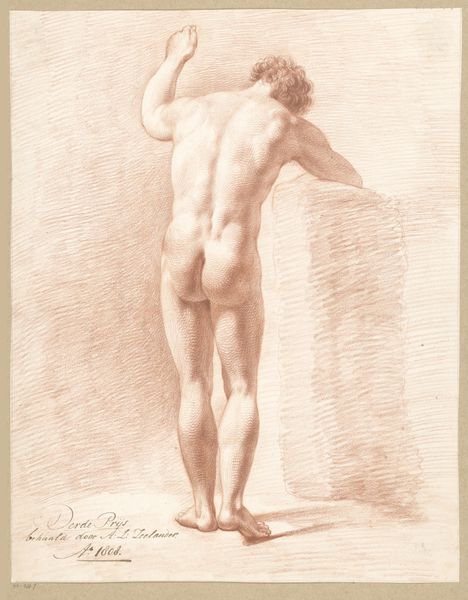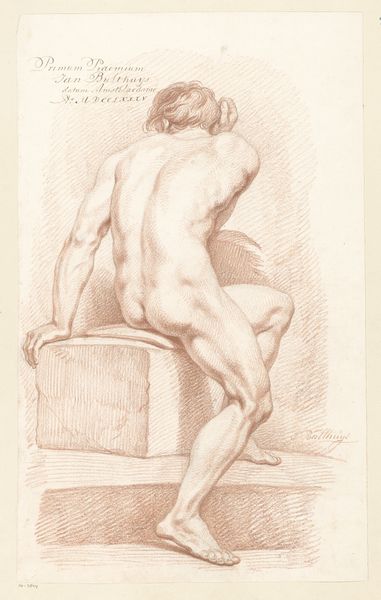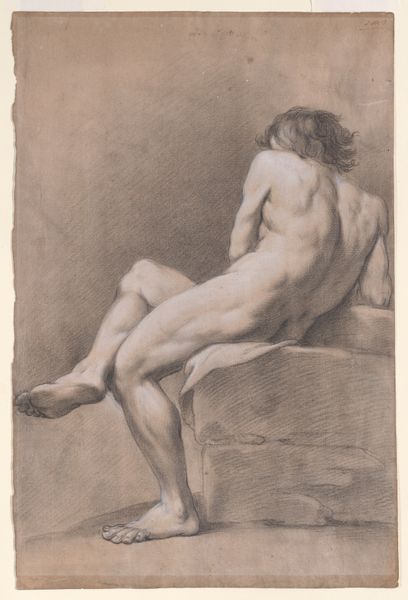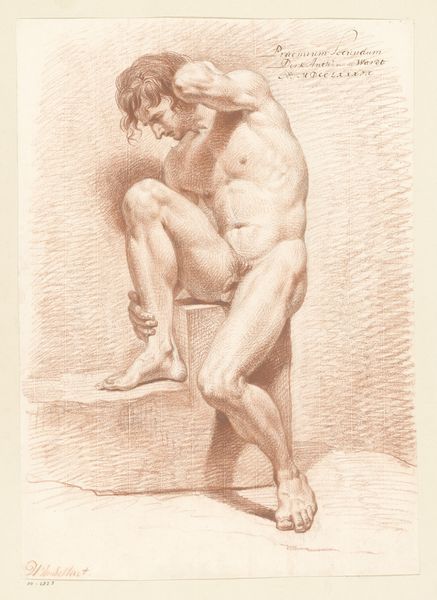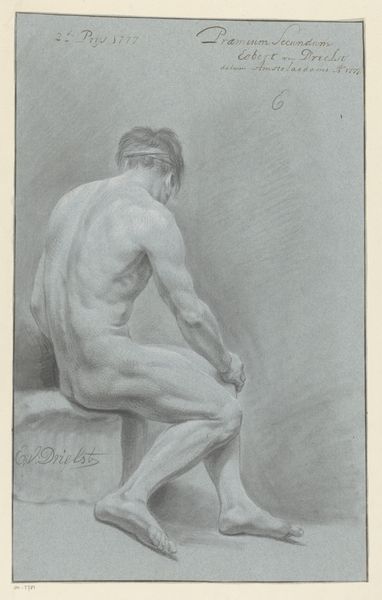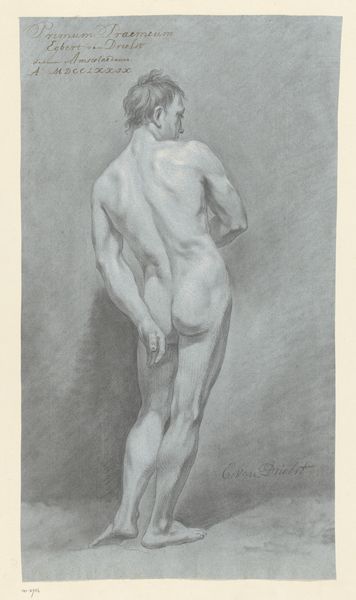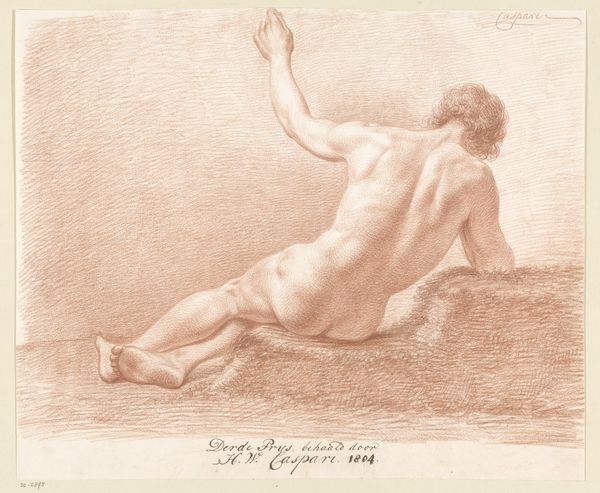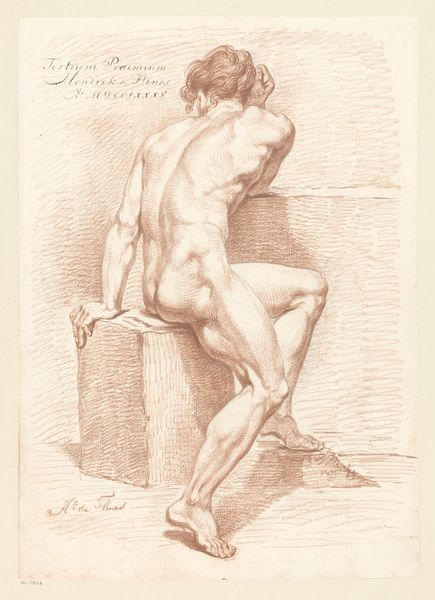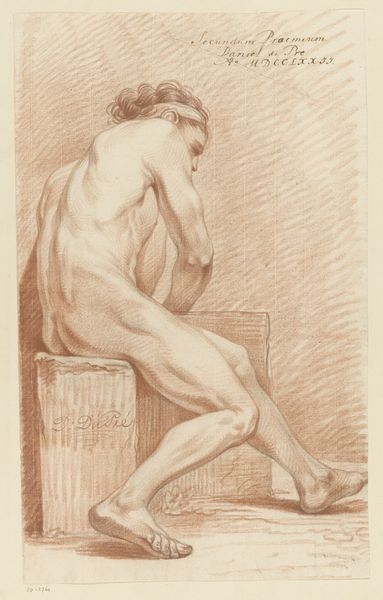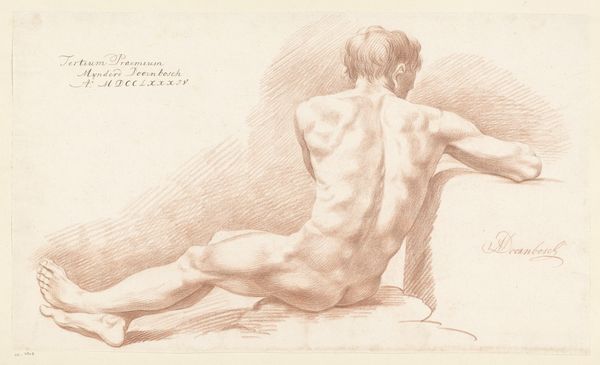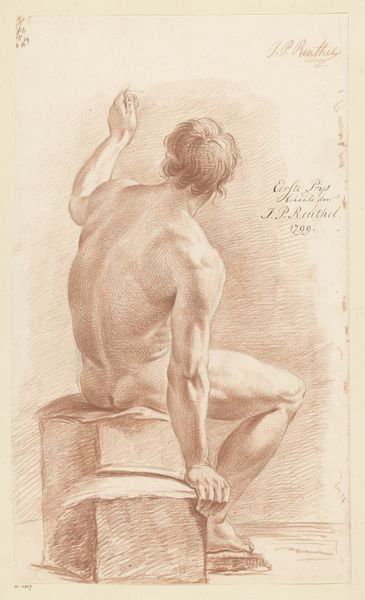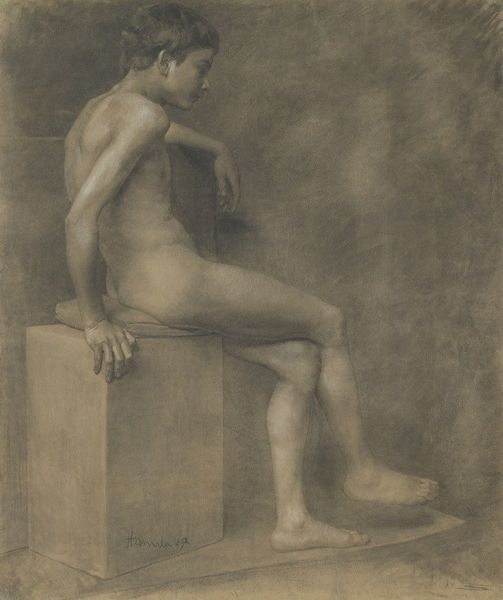
Zittend mannelijk naakt, op de rug gezien (2e prijs 1812) Possibly 1812 - 1814
0:00
0:00
drawing, pencil
#
pencil drawn
#
drawing
#
pencil sketch
#
charcoal drawing
#
figuration
#
portrait reference
#
pencil drawing
#
pencil
#
portrait drawing
#
academic-art
#
nude
#
realism
Dimensions: height 445 mm, width 285 mm
Copyright: Rijks Museum: Open Domain
Editor: This drawing, titled "Zittend mannelijk naakt, op de rug gezien" by Abraham Lion Zeelander, possibly from 1812-1814, is quite striking in its simplicity. It depicts a nude male figure, viewed from the back, rendered in what looks like pencil. There's a clear emphasis on form and anatomy. What do you see in this piece, considering its historical context? Curator: I'm immediately drawn to the pose – the slight torsion of the torso, the way the light falls across the muscles. It evokes a sense of classical contrapposto, a very specific memory embedded in our understanding of the human form. Consider that this piece apparently won second prize in 1812. Academic art of that era was heavily influenced by classical ideals and the nude figure as a symbol of virtue and idealised beauty, yet with a palpable shift in focus towards realism. What emotional weight do you think that balance between idealism and realism might carry for the viewer? Editor: That's an interesting point about the contrapposto connecting it to classical ideals! I hadn't considered how it both adheres to and maybe even subtly challenges those traditions. Is it also fair to say that such figures are more like studies rather than posed figure? Curator: Precisely. Drawings such as this offer us direct insights into the artistic processes of the time. By studying the anatomical structures that constitute a human form, a pursuit rooted in Enlightenment era knowledge, do we enhance our appreciation of idealised beauty, or do we demystify the naked form, exposing humanity’s fragile imperfection? How might contemporaries view this depiction, armed with such associations? Editor: So it becomes more about exploring the nuances of the human body and our relationship with it, culturally and psychologically. This has been incredibly insightful. Thanks for your perspective. Curator: And thank you. Looking at art through multiple lenses unveils cultural echoes, which shapes a deeper connection between us and artworks from centuries past.
Comments
No comments
Be the first to comment and join the conversation on the ultimate creative platform.
